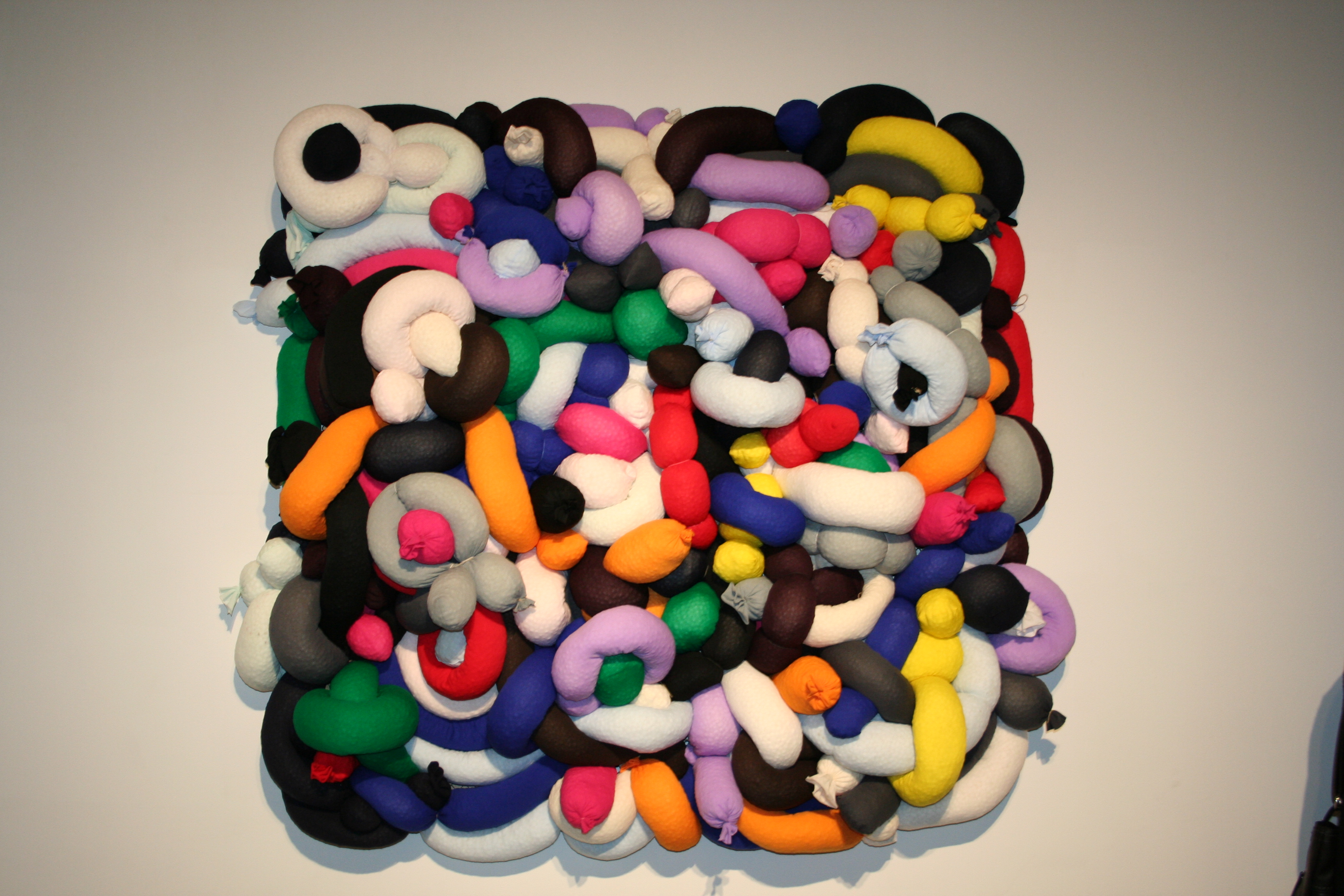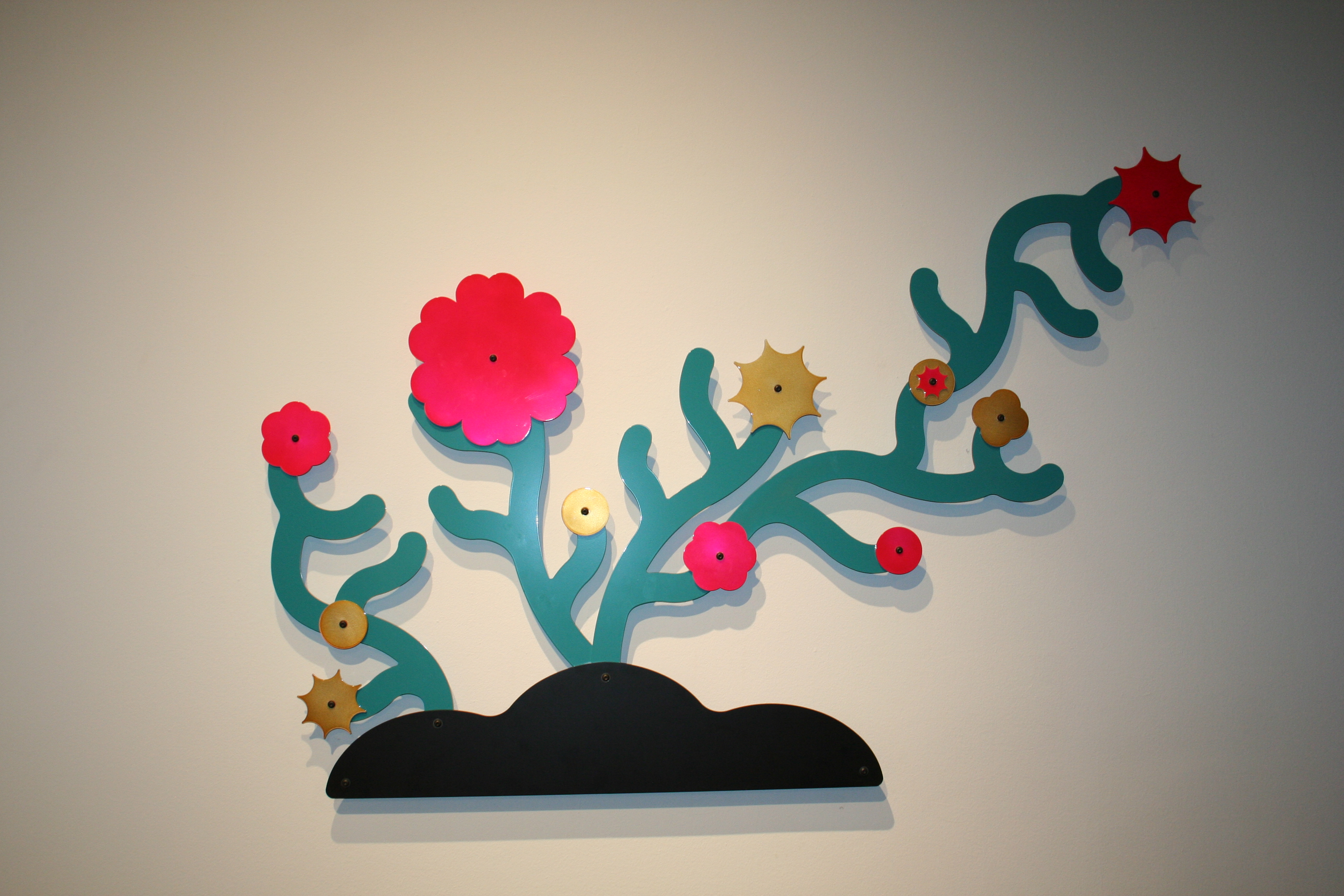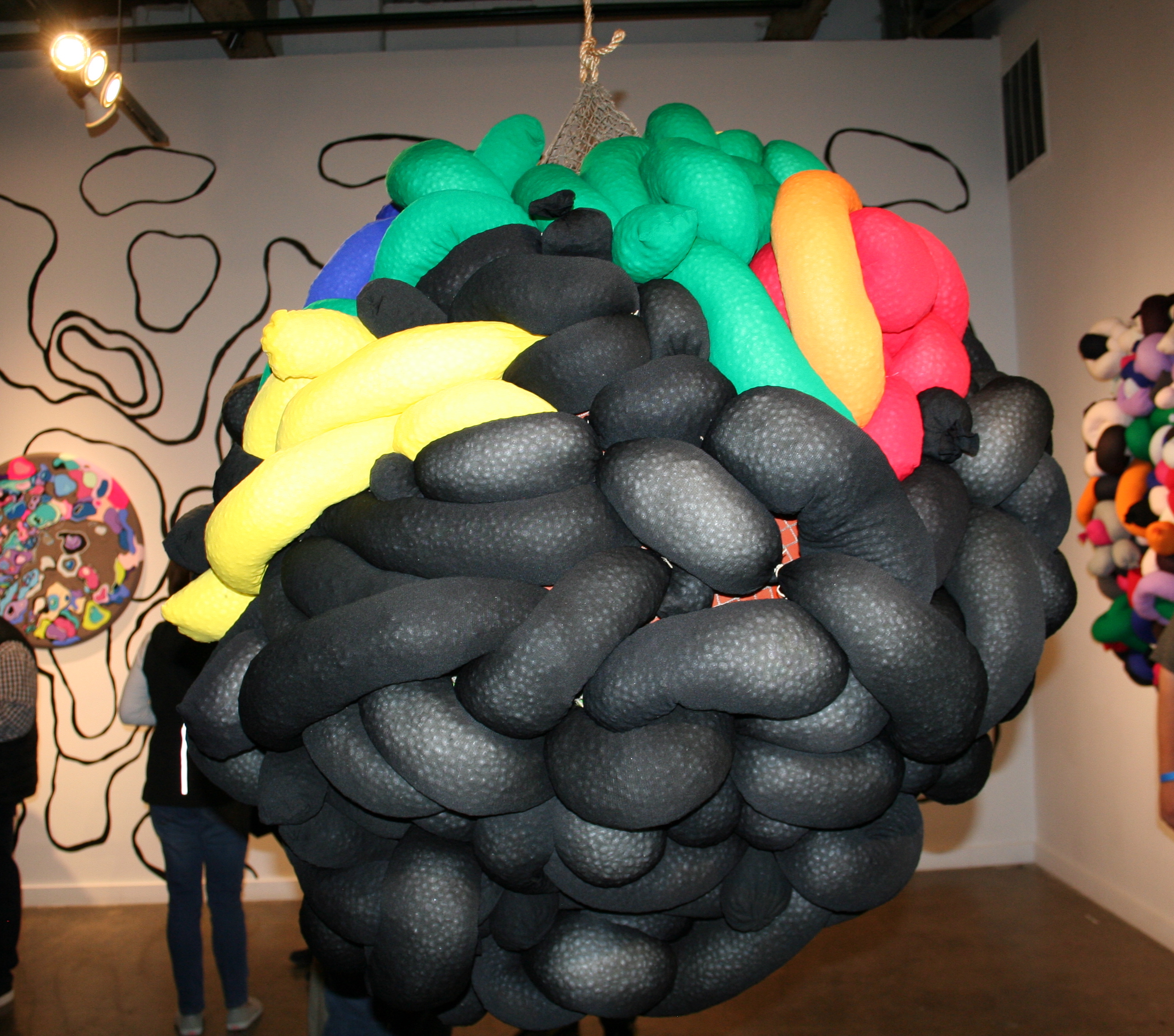Red Bull House of Arts Gives Artists Wings
Gallery

Not many residents are aware that on the outer edge of Eastern Market lies an underground cave/art gallery. The Red Bull House of Art is a live-in residency program that brings in artists from all over the world to create work. As Matt Eaton, the director, says on the Red Bull House of Art website:
“At Red Bull House of Art we are committed to affecting positive change in the lives of artists. By changing the way both individuals and communities alike interact with artists, we help to craft a more harmonious, productive and fruitful cultural landscape for everyone.”
Allison Kruske, the communications coordinator, also speaks of the change in the artists. “Artists live here 24/7 for three months. In this time, they can try something new, risk free. Artists often step outside of their comfort zone, or even collaborate.” An artist herself, Kruske understands the creative process. According to her biography page on the Red Bull House of Art website, Kruske graduated from the University of Michigan-Ann Arbor with an art history degree. During her time in college, she gained an appreciation for Modernism in art. She recently completed an acrylic paint piece that changes depending on lighting, paper orientation and individual viewer. Now a curator, Kruske is interested in assisting artists in Detroit. “Many of them have never visited the city of Detroit before, and this is a totally new experience for them,” she says.
Ellannah Sadkin, one of the current resident artists, has found herself having to adjust to her new surroundings. “I am used to working alone, so this is completely foreign to me. I have a hard time working arounds others, so I began to come to the studio late at night. I also made a miniature barricade around myself, so no one could see what I was doing. You have to enjoy making the art, which means finding your happy place,” she says. Sadkin is used to her solo studio space in New York City, where she originates. “Some of the pieces featured in my work here are from my old show. They are four large circles that represent, to me, the emotions and stages my mind works through during my creative process.”
Sadkin’s newer pieces also represent her mind, particularly her social anxiety. “My two pieces, ‘Fun Meat’ and ‘Big Softy’, symbolize the brain under anxiety. The different colors represent the emotions. The red is a cortex, because when you’re stressed, those areas become overactive,” she says. “‘Big Softy’ is also the brain, and my intention was that it was supposed to be able to swing and hit you in the face, just like how anxiety feels sometimes.” Sadkin goes on to explain her third piece, which deals with emotions in society. “I feel like in today’s world, we aren’t allowed to show emotions. On Instagram, everyone is happy, and it leaves the viewer feeling like there’s something wrong with them if they aren’t happy. One of my pieces is called ‘Hive Mind,’ and it represents how we are expected to think a certain way.” By creating art, Sadkin hopes to bring happiness to others, along with herself. “I am very interested in why we create. Why am I doing this? It is not about monetary value, but more about grounding yourself. If my art can make others feel more connected, and joyful, then I am satisfied.” Mr. Kiji also explores his own identity and emotions in his shows. “My work typically plays on perception, and how different signifiers of ethnicity can define a person. For example, when people first meet me, my name changes how they may initially think of me,” he says.
Originally born in the city of Beepu on the island of Kyushu, Japan, Mr. Kiji has called many different locations home. He partly grew up in a Buddhist temple before moving to New York City. “Some of my work plays on how I grew up with two different cultures, two different identities. I began by making flags, specifically Irish-Japanese flags. Flags represent so much in one statement. I also made ‘Conflict Quilts,’ because quilts represent safety and carrying the family legacy to me.” Mr. Kiji also incorporated some World War II references into his show. “I used the Pacific Ocean as a point of reference. I think the nautical themes also go into navigation, and wayfinding, which all represent finding home. Home is different- you can allude to home, but you can’t really describe it.” Like Sadkin, Mr. Kiji also wants to evoke emotions from the viewers of his work. “Conversation on how do we see each other is crucial, especially in these recent times. Are we Americans? Are we our ethnicity, or our gender? How should we perceive one another?”
Tschabalala Self is interested in perception as well. Her work explores how the black female body is conceptualized in modern society. “I’m interested in trying to unpack the significance of the black female body to better understand myself, my circumstances and the situations of other people who resemble me,” she says in an interview with Ryan Patrick Hooper, available on the Red Bull House of Art website. Tschabalala Self is also interested in black individuality:
“There’s a lack of encouragement when it comes to individualism and how people are brought up to see themselves. You’re personally brought up to think your behavior is a reflection of an entire community. You should be able to be any kind of person you want to be and still be black. That’s why I’d like to have a wider array of personalities and types of characters represented in my sculptures. Some of them are good, some are bad, some are happy, some are sad — but all of them are unique and completely themselves.”
The Red Bull House of Art has allowed Tschabalala Self to explore different mediums than she normally works in. “This is the first time I have done sculptures and installation projects. My other work is paintings, but because of the space and resources I have available, I am able to branch out.” Her work is one of the highlights of the show, and is best seen in person. It features alternating sensual paintings projected onto two large walls of a black woman’s body, along with two sculptures placed in front of the projections that provide literal and figurative perspective. Like her two fellow resident artists, she hopes to evoke emotions with her work. “I hope that the audience feels inspired and confident by viewing the woman in my work’s confidence. As an artist, you are not always sure if your message got through. This piece features a black woman who is uniquely herself, and I hope the audience gets that message, always.”
The Red Bull House of Art continues to be a place that fosters artists in Detroit. “Artists come here and see what’s happening here and identify this place and really acknowledge that it exists. That there are people here who are doing things in the creative community that matter,” says Eaton in an interview with Grace Lisa Scott of the Toronto Star Newspaper. Detroit has always been a place of inspiration for many different facets of art. “It’s easy to forget that Detroit has really contributed more to the health and wealth of global culture in the last 100 years than many cities have in 1,000 years,” Eaton says. “It’s Motown, it’s techno city, it’s the growth of the auto city, garage rock.” By providing artists a risk-free setting to explore their ideas, The Red Bull House of Art has created a place where every Detroiter can resonate with the work, through exploring social and mental anxiety, to questioning one’s identity, to changing perceptions about your cultural heritage. Kruske says it best when she speaks about their sponsor, Red Bull. “Red Bull does not force us to overly brand them, or to include their logo in the artwork. Like the company slogan, Red Bull gives you wings, they give artists the wings to create.”



